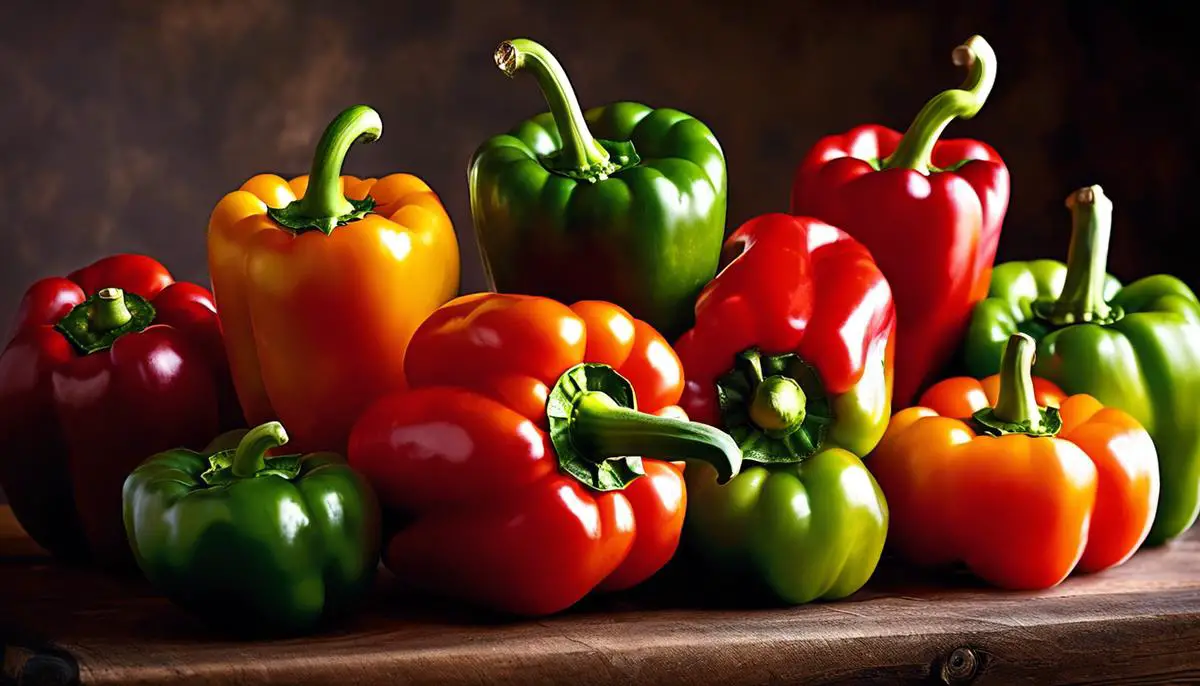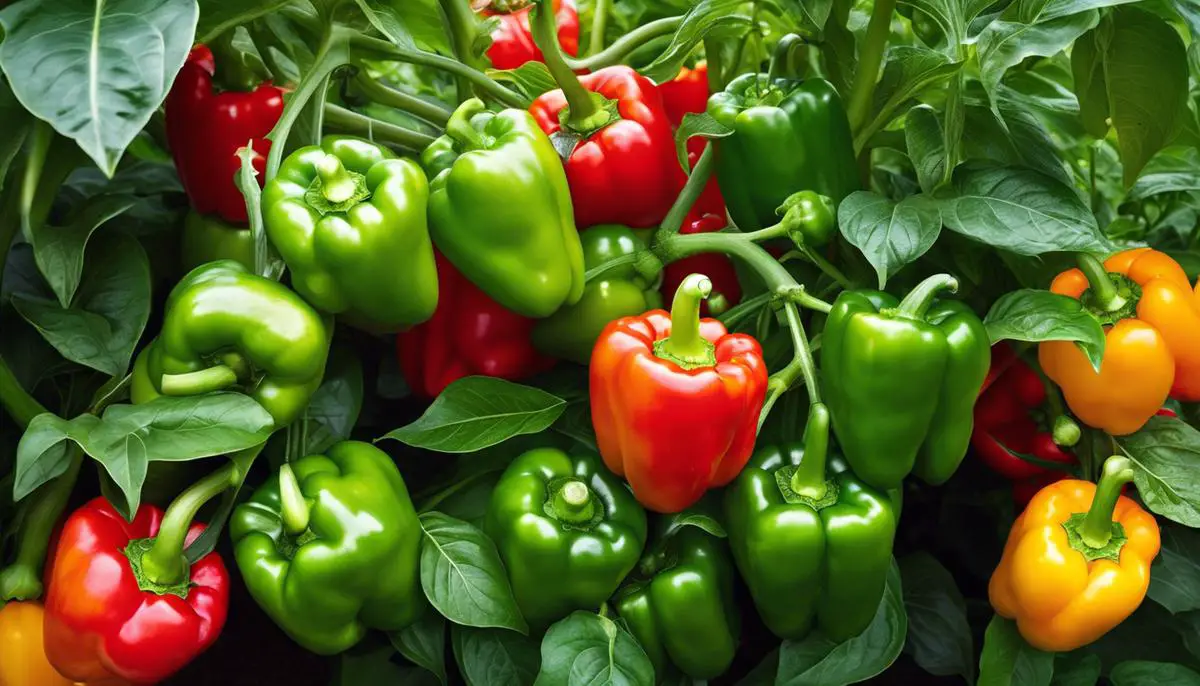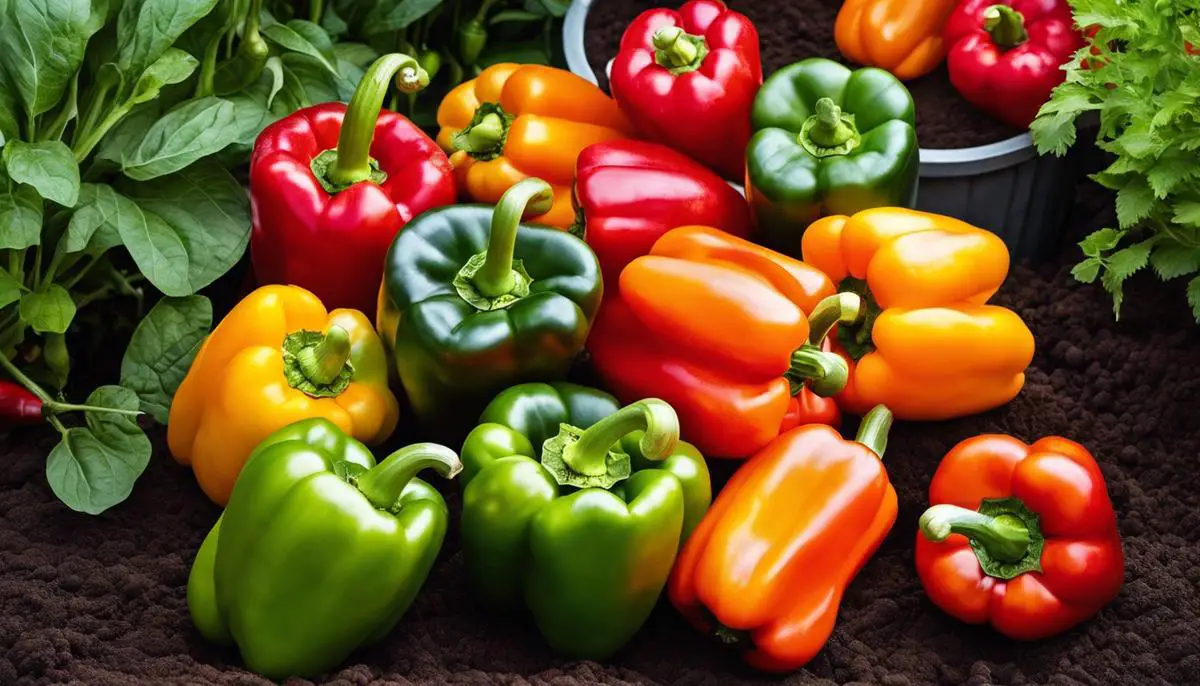For many gardening enthusiasts, the sight of vibrantly colored bell peppers growing in their own backyard is immensely satisfying. Bell peppers are not only a delightful addition to your kitchen but also an ornament to your garden, with their bright hues and glossy textures. However, achieving a healthy and flourishing bell pepper cultivation demands more than just planting and watering. An in-depth understanding of bell pepper’s environmental and nutritional requirements, adept knowledge of planting techniques, and efficient handling of pests and diseases are all integral components of successful bell pepper gardening. This discussion progresses from unraveling the bell peppers’ temperamental soil, light, and temperature preferences to the crucial tasks of seed germination and spacing during plantation. Furthermore, we also consider the pivotal strategies to deal with pests and diseases that pose a threat to the well-being of your plants.
Understanding Bell Pepper Requirements
Into the Green: Cultivating Bell Peppers Like a Pro
Reader Poll: What online courses would interest you?
Embarking on the journey of cultivating your bell pepper plants can be as enthralling as it is rewarding. Lack of professional knowledge shouldn’t detract any hobbyist from digging into this endeavor. Here’s a simplified guide that can demystify the core requirements for bell pepper growth.
- Seed Choice and Planting Time: Opting for the right seeds is the organic groundwork for successful bell pepper cultivation. Aim for robust, high-quality seeds from a credible supplier. The best time to sow them is approximately eight weeks before the last spring frost hits.
- Soil Selection: Bell pepper plants flourish in well-draining loamy soil. The ideal pH of the soil should range between 6.0 and 6.8. For a nutrient-rich soil bed, mix in a good quantity of organic compost or any slow-release fertilizer prior to planting.
- Sunlight Requirement: Full sunlight is a steadfast ally of bell pepper growth. It’s essential to pick an open spot in the garden that gets at least six to eight hours of sunlight each day.
- Optimal Temperature: Bell pepper plants have a soft spot for warm temperatures. They thrive when the soil temperature stays within the sweetness of 70-85°F. To maintain this requisite warmth, consider using black plastic mulch on the soil surface.
- Watering and Feeding: Bell pepper plants love consistent watering. It’s encouraged to keep the soil lightly moist but never waterlogged. Also, side dress the plants with a high-potassium fertilizer once they start getting bushy, and repeat it after the first flush of fruit sets in.
- Rotation and Pruning: To keep diseases at bay, it’s prime practice to not plant bell peppers in the same spot where tomatoes, eggplant or other peppers were planted in the recent years. Pruning can also be done to promote higher yields and larger fruits.
- Pest and Disease Control: Watch out for common culprits like aphids, flea beetles or cutworms that infiltrate the plants. Keep an eye out for signs of diseases like pepper wilt or leaf spot, and apply organic pesticides or fungicides as necessary, always following product instructions.
- Harvesting: Allow bell peppers to mature on the plant for the most sun-kissed, flavor-packed results. A pepper’s color vividly denotes its ripeness. Harvest them by cutting with a sharp knife to avoid damaging the plant.
Remember, learning the art of bell pepper cultivation is a journey, not just a destination. Each step unveils new aspects and knowledge worth treasuring. The pleasure derived as the rich, colorful fruits of labor unfurl before the eyes is unmatchable. It’s time to roll up those sleeves and immerse oneself in this green endeavor.

Planting Bell Peppers
A Deep Dive into Successful Bell Pepper Cultivation: The Final Steps
Once your bell peppers have passed the crucial stages of seed choice, soil selection, meeting sunlight requirements, and reaching optimal temperatures, it’s time you walk these babies through the next stage of their growth journey. Here, we take you through the nuances of planting your bell peppers right, ensuring they thrive and blossom into crunchy, vibrant fruits you can enjoy in your salads, stir-fries or simply grill.
Subscribe to our newsletter!
Delve into Spacing and Depth
Firstly, it’s crucial to understand the importance of spacing. Bell pepper plants need ample room to spread out and flourish. You should plant them about 18 to 20 inches apart. In terms of row spacing, aim for about 24 to 36 inches. Remember, a good start needs space.
Now, let’s talk about how deep to plant these seeds. Generally, plant pepper seeds about ¼ inch deep in the soil. The loose, well-aerated soil you prepared earlier will provide the perfect environment for these seeds to nestle in and germinate successfully.
Unraveling the ‘Transplanting’ Secret
Avid bel pepper growers might already know this—peppers love warmth and therefore, starting the seeds indoors around eight to ten weeks before the last spring frost date is vital. Once the outdoor temperature consistently stays above 60°F, then you’ll know it’s time to transplant them outdoors.
During transplanting, dig up each seedling from its pot and transplant it into the garden bed at the same depth it was previously growing. This allows a smooth transition for your budding bell pepper plant without causing any root trauma.
The Miracles of Mulch
While it’s easy to get carried away with watering and feeding regimens, (they’re all very important), don’t underestimate the humble mulch. Spreading mulch around your plants helps retain soil moisture, suppresses weeds, and regulates soil temperature—an all-rounder move that absolutely boosts the health of your bell peppers.
Ensuring Sturdy Support
As the peppers grow, plants can become heavy and might need some support to avoid snapping or drooping under their weight. A simple tomato cage or a stake inserted in the ground can serve as an excellent support system. Tie the main stem every 6 inches to the cage or stake as the plant grows taller, always being gentle to avoid damaging the plant.
In the end, remember, patience is the key. Bell peppers might take their own sweet time to fruit—around 60 to 90 days, but the satisfaction of raising a plant, nurturing it, and finally, harvesting your own home-grown, crunchy bell peppers, is truly unparalleled. So, amateur growers take heart, professionals, refine your skills, for bell pepper growing is an art to master. Happy gardening!

Handling Pests and Diseases
The Battle Against Pests and Diseases in Bell Pepper Cultivation
Bell peppers are a delight to grow – vibrant in color and versatile in use. These watery, crunchy delights can pose a true test for the green-thumbed, though, as their cultivation can invite unwanted guests: pests and diseases. But don’t let this deter you, it’s all part of the ‘pepper grower’s journey. Here’s a guide to identifying these issues and tackling them head-on!
First, a keen eye is a must in managing pests and diseases. Daily inspection of your bell pepper plants can help detect any issue at its onset. Things to look for include discoloration, leaf spots, poor growth, and the presence of insects.
Aphids are common pests in bell pepper cultivation. These insects suck out sap from plant leaves, leading to wilting and reduced yield. Natural remedies include introducing beneficial insects, like ladybugs and lacewings, that prey on aphids. Spraying the plants with a mild solution of soapy water can also be effective.
Another foe could be the infamous Colorado potato beetle. Contrary to their name, these beetles aren’t limited to potatoes. They love bell pepper leaves and stems too. Handpicking can be an effective management method, as beetles and their larvae are easy to spot. Natural predators, such as birds, can also be helpful, so promoting wildlife around your garden might not be a bad idea.
Managing diseases is a trickier feat. One typical problem is the mosaic virus, evidenced by mottled green or yellow leaves and stunted growth. Unfortunately, there’s no treatment for this virus. Infected plants should be removed and disposed of immediately to prevent the virus from spreading.
A common fungal disease is Anthracnose, marked by sunken, water soaked spots on fruits and leaves. To manage this, it’s recommended to practice crop rotation. Planting bell peppers in the same place continuously can increase the chances of soil-borne fungal diseases.
There’s also bacterial leaf spot, a disease causing dark spots on leaves or fruits. Copper-based fungicides can control its spread, though preventing plant stress through regular care can keep the disease at bay.
In managing pests and diseases, remember that prevention is always better than cure. Moreover, organic methods not only maintain the integrity of the bell peppers but also contribute to the overall health of the garden. As you move forward in your gardening journey, the challenges of pests and diseases will evolve from hurdles into fascinating aspects of nature to study and manage. Happy growing!

As a garden enthusiast, it’s imperative to comprehend that growing bell peppers require an extensive knowledge base, patience, and consistent effort. From soil type to lighting, watering schedule, temperature regimes, proper planting techniques to effective management of pests and diseases – every minute detail counts. The aim is not only to grow these vibrant, crunchy vegetables and contribute to your meal table but also to delight in the process of nurturing them to their full potential. Remember, a healthy, flourishing garden is an extended reflection of a gardeners’ perseverance and attention to detail. Here’s to the beautiful journey of cultivating and rejoicing in your very own bell pepper plantation!

